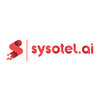
i
Sekel
Technologies
Filter interviews by
Sekel Technologies Front end Developer Interview Questions and Answers
7 Interview questions
Hooks are functions that let you use state and lifecycle features in React functional components.
useState: Allows you to add state to functional components. Example: const [count, setCount] = useState(0);
useEffect: Lets you perform side effects in function components. Example: useEffect(() => { document.title = `Count: ${count}`; }, [count]);
useContext: Provides a way to share values between components without ...
React itself is a library, but it can be used with various frameworks and tools to enhance development.
Next.js: A framework for server-rendered React applications, enabling features like static site generation and API routes.
Gatsby: A static site generator that uses React, optimized for performance and SEO, ideal for building fast websites.
React Router: A standard library for routing in React applications, allowin...
React is a popular JavaScript library for building user interfaces, particularly single-page applications, using a component-based architecture.
Component-Based: React allows developers to build encapsulated components that manage their own state, making code reusable and easier to maintain.
Virtual DOM: React uses a virtual representation of the DOM to optimize rendering, improving performance by minimizing direct ...
Tailwind CSS is a utility-first CSS framework for creating custom designs without leaving your HTML.
Utility-first approach: Tailwind provides low-level utility classes like 'flex', 'pt-4', 'text-center' to build designs directly in HTML.
Customization: Easily customize your design system using the 'tailwind.config.js' file to define colors, spacing, and more.
Responsive design: Tailwind includes responsive utilities...
Lifecycle methods are hooks in component-based frameworks that manage the component's lifecycle events.
Lifecycle methods allow developers to run code at specific points in a component's life, such as mounting, updating, and unmounting.
In React, common lifecycle methods include componentDidMount, componentDidUpdate, and componentWillUnmount.
Example: componentDidMount is called after a component is added to the DOM,...
React.js is a JavaScript library for building user interfaces, particularly single-page applications, using a component-based architecture.
Component-Based: React allows developers to build encapsulated components that manage their own state, making code reusable and easier to maintain.
Virtual DOM: React uses a virtual DOM to optimize rendering, updating only the parts of the UI that have changed, which enhances pe...
Next.js is a React framework for building server-side rendered and static web applications with ease.
Server-Side Rendering (SSR): Automatically renders pages on the server for better SEO and performance.
Static Site Generation (SSG): Pre-renders pages at build time, improving load times (e.g., blog posts).
API Routes: Allows building API endpoints within the application (e.g., /api/users).
File-Based Routing: Simplif...
Sekel Technologies Front end Developer Interview Experiences
4 interviews found
I appeared for an interview in May 2025, where I was asked the following questions.
- Q1. What are hooks, and what are their different types?
- Ans.
Hooks are functions that let you use state and lifecycle features in React functional components.
useState: Allows you to add state to functional components. Example: const [count, setCount] = useState(0);
useEffect: Lets you perform side effects in function components. Example: useEffect(() => { document.title = `Count: ${count}`; }, [count]);
useContext: Provides a way to share values between components without passi...
- Q2. What are the frameworks of React?
- Ans.
React itself is a library, but it can be used with various frameworks and tools to enhance development.
Next.js: A framework for server-rendered React applications, enabling features like static site generation and API routes.
Gatsby: A static site generator that uses React, optimized for performance and SEO, ideal for building fast websites.
React Router: A standard library for routing in React applications, allowing nav...
- Q3. What is React?
- Q4. What is lifecycle methods?
- Ans.
Lifecycle methods are hooks in component-based frameworks that manage the component's lifecycle events.
Lifecycle methods allow developers to run code at specific points in a component's life, such as mounting, updating, and unmounting.
In React, common lifecycle methods include componentDidMount, componentDidUpdate, and componentWillUnmount.
Example: componentDidMount is called after a component is added to the DOM, usef...
- Q5. What is Tailwind css?
Interview Preparation Tips
I applied via Instahyre and was interviewed in Aug 2024. There were 2 interview rounds.
Small assignment to build simple App.
(2 Questions)
- Q1. JavaScript Questions
- Q2. Reactjs Questions
Interview Preparation Tips
- Javascript
- React.Js
I appeared for an interview in Dec 2024, where I was asked the following questions.
- Q1. What is React.js, and how is it used in web development?
- Ans.
React.js is a JavaScript library for building user interfaces, particularly single-page applications, using a component-based architecture.
Component-Based: React allows developers to build encapsulated components that manage their own state, making code reusable and easier to maintain.
Virtual DOM: React uses a virtual DOM to optimize rendering, updating only the parts of the UI that have changed, which enhances perform...
- Q2. What is Next.js and what are its key features?
- Ans.
Next.js is a React framework for building server-side rendered and static web applications with ease.
Server-Side Rendering (SSR): Automatically renders pages on the server for better SEO and performance.
Static Site Generation (SSG): Pre-renders pages at build time, improving load times (e.g., blog posts).
API Routes: Allows building API endpoints within the application (e.g., /api/users).
File-Based Routing: Simplifies r...
I applied via Recruitment Consulltant and was interviewed in Apr 2023. There were 4 interview rounds.

A simple web application of To-Do list using react.js/vue.js technology
(4 Questions)
- Q1. Basic to mid level html QnA.
- Q2. Basic css3 QnA and few simple task usnig css3.
- Q3. Few JS basic QnA and simple arr/obj method coding task
- Q4. React.js/vue.js QnA and few simple task to perform using JS Lib/frame.
(2 Questions)
- Q1. Started with self intro then ask about education, gaps and skills asked me show my major project and explain to him(he continuously asked qs on my project)
- Q2. 2-3 situational based qs
Interview Preparation Tips
- HTML
- CSS3
- Javascript
- React.Js
- Vue.js
- OOPS
Hr and tech interviewer were nice throughout the process.
Top trending discussions






Interview questions from similar companies

Prime Numbers Questions
(2 Questions)
- Q1. Normal Question
- Ans.
A Front End Developer focuses on creating user interfaces and experiences for web applications using HTML, CSS, and JavaScript.
Utilizes HTML for structuring web content, e.g., <div>, <header>, <footer>.
Employs CSS for styling, such as Flexbox and Grid for layout.
Uses JavaScript for interactivity, e.g., DOM manipulation and event handling.
Familiar with frameworks like React, Angular, or Vue.js for buil...
- Q2. Basic Questions
- Ans.
Basic questions for a Front End Developer interview cover essential skills and knowledge in web development.
HTML: Structure of web pages; example: <div>, <span>, <a>.
CSS: Styling web pages; example: Flexbox, Grid, media queries.
JavaScript: Interactivity and dynamic content; example: DOM manipulation, event handling.
Responsive Design: Ensuring usability on various devices; example: mobile-first approac...
Interview Preparation Tips

I applied via Walk-in and was interviewed before May 2023. There were 2 interview rounds.
(2 Questions)
- Q1. Basic Qualification
- Ans.
Basic qualifications for a software developer include education, skills, and experience in programming and software development.
A bachelor's degree in Computer Science or related field is often required.
Proficiency in programming languages like Java, Python, or C++ is essential.
Experience with software development methodologies such as Agile or Scrum is beneficial.
Familiarity with version control systems like Git is im...
- Q2. Reasons for job change
- Ans.
I'm seeking new challenges, opportunities for growth, and a better alignment with my career goals and values.
Desire for professional growth: I'm looking for a role that offers more opportunities for learning and advancement.
Alignment with career goals: My current position doesn't fully align with my long-term career aspirations in software development.
Seeking a better work culture: I want to be part of a team that valu...
(2 Questions)
- Q1. Virtual Dom vs Real Dom
- Ans.
Virtual Dom is a lightweight copy of the Real Dom, used for efficient updates in web development.
Virtual Dom is a lightweight copy of the Real Dom, used for efficient updates in web development.
Real Dom represents the actual structure of the web page, while Virtual Dom is a simplified version stored in memory.
Changes made to the Virtual Dom are compared with the Real Dom to determine the minimum number of updates neede...
- Q2. React Hooks flow
Interview Preparation Tips
Skills evaluated in this interview
I appeared for an interview before May 2024, where I was asked the following questions.
- Q1. Deployment Process
- Q2. Data Structure Questions
Interview Preparation Tips

React Js Frontend Developer Interview Questions & Answers
WEMATTER PXTposted on 19 Jan 2025
I applied via Referral and was interviewed in Dec 2024. There was 1 interview round.
Basic DSA problem from leetcode

(1 Question)
- Q1. Experience of past working

I appeared for an interview before Jun 2024, where I was asked the following questions.
- Q1. What is the difference between linear regression and logistic regression?
- Q2. What is Object-Oriented Programming (OOP) in Python?
- Ans.
Object-Oriented Programming (OOP) in Python is a programming paradigm based on the concept of objects, which can contain data and methods.
Encapsulation: Bundling data and methods that operate on the data within one unit (class). Example: class Dog with attributes and methods.
Inheritance: Creating new classes from existing ones, allowing for code reuse. Example: class Bulldog inherits from class Dog.
Polymorphism: The ab...
Interview Preparation Tips
Sekel Technologies Interview FAQs
Tell us how to improve this page.
Sekel Technologies Interviews By Designations
- Sekel Technologies Front end Developer Interview Questions
- Sekel Technologies Customer Success Manager Interview Questions
- Sekel Technologies UX Designer Interview Questions
- Sekel Technologies UI/UX Designer Interview Questions
- Sekel Technologies Software Developer Interview Questions
- Sekel Technologies Frontend Developer Intern Interview Questions
- Sekel Technologies Backend Developer Intern Interview Questions
- Sekel Technologies Senior Front end Developer Interview Questions
- Show more
Interview Questions for Popular Designations
- Software Developer Interview Questions
- Web Developer Interview Questions
- React Js Frontend Developer Interview Questions
- Developer Interview Questions
- UI Developer Interview Questions
- Angular Frontend Developer Interview Questions
- Angular Developer Interview Questions
- React Native Developer Interview Questions
- Show more
Overall Interview Experience Rating
based on 4 interview experiences
Difficulty level
Duration
Interview Questions from Similar Companies
Sekel Technologies Front end Developer Reviews and Ratings
based on 2 reviews
Rating in categories
|
Associate Product Manager
7
salaries
| ₹3.3 L/yr - ₹8.2 L/yr |
|
Softwaretest Engineer
6
salaries
| ₹5.2 L/yr - ₹8 L/yr |
|
UI/UX Designer
5
salaries
| ₹5 L/yr - ₹6.5 L/yr |
|
Software Engineer
4
salaries
| ₹6 L/yr - ₹8 L/yr |
|
Software Developer
4
salaries
| ₹7 L/yr - ₹11.5 L/yr |

QuickRide

sysotel.ai

Tech Formation

Reveation Labs
- Home >
- Interviews >
- Sekel Technologies Interview Questions














